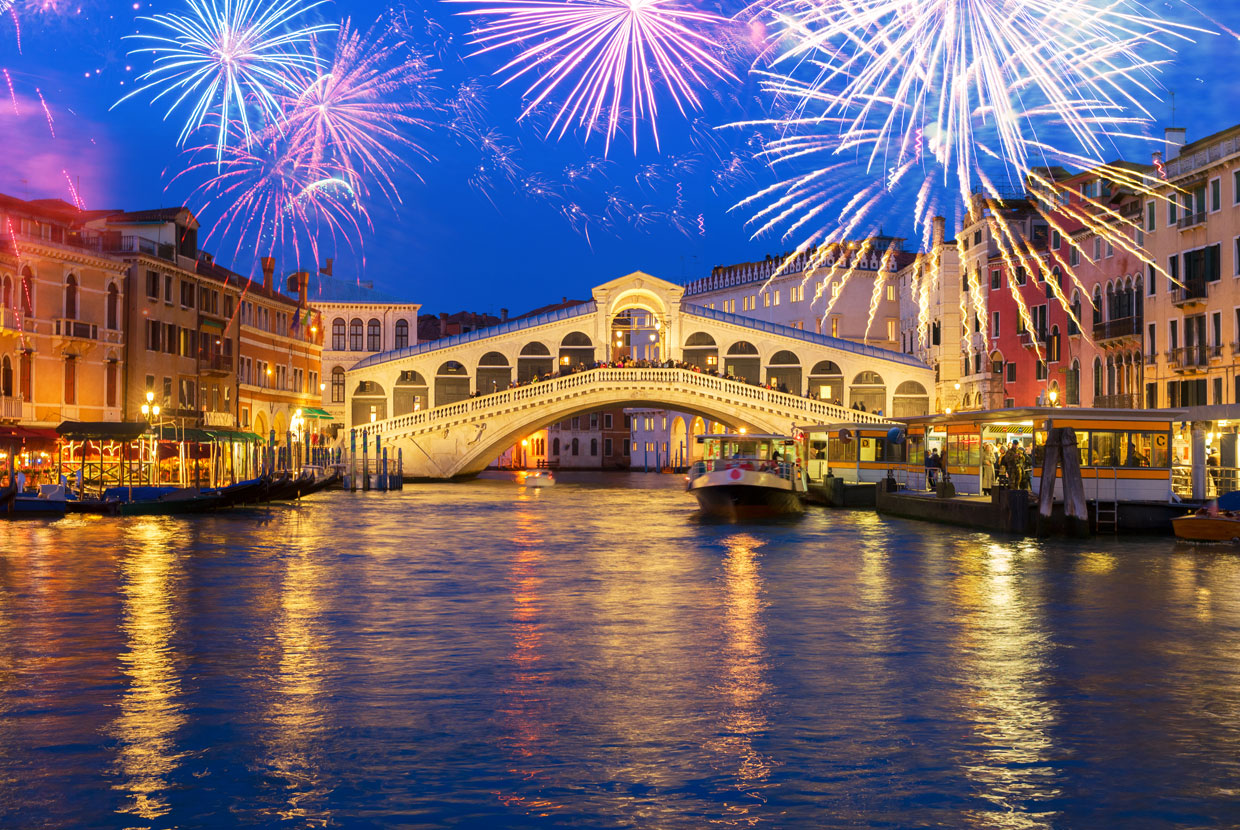
Although the Rialto Bridge was rebuilt many times since the 12th century, this elegant structure is the oldest bridge crossing the Grand Canal in Venice. Featuring a beautiful arched design and intricate stonework, this is also one of the most iconic and most visited tourist attractions in the city.
But what makes the Rialto Bridge so different?
Interestingly, this iconic bridge was also the only way to cross the Grand Canal for more than 300 years. Aside from the glamorous appearance, many shops and craft stores can be found beneath the arcades on the Rialto Bridge. Most of these stores now cater to tourists but this was actually an important hub for butchers, bakers, and other merchants back in medieval times.
The Rialto district was the first to be built in Venice and many people settled in this area during the 9th century. For this reason, Rialto was a busy financial and commercial hub and the Rialto Bridge became the gateway to the main market. In fact, this was the main food market in Venice by the 11th century and anything from spices to fish and fresh farm produce could be found here.
Brief History of Rialto Bridge in Venice
While the Rialto Bridge was constructed in the 16th century, the very first dry crossing of the Grand Canal was built in 1181. However, less than one century later, this effort was rebuilt to cater to the increased number of people that were crossing over to the Rialto Market every day. It would be a wise decision but also something which was not considered enough in later times.
In 1310, much of the Rialto Bridge was burned down during a revolution led by Tiepolo and then it collapsed completely just a few years later when a group of people gathered to watch a local boat parade. A couple of centuries later, two rows of shops were built on each side of the bridge and these were made available for rent to merchants.
Unfortunately, the Rialto Bridge collapsed once again in 1524 and the Venetians appointed five designers including Michelangelo to build a stone replacement.
Several bridges occupied this same crossing prior to the construction of the Rialto Bridge which officially opened to the public in 1591. That being said, this stunning stone structure was so much more impressive than the old wooden bridge and certainly a lot stronger.
Everyone knew that the previous wooden bridges could only last so long and a stone replacement was needed to withstand the heavy loads that crossed the Grand Canal every day. For this reason, many famous artists such as Palladio, Sansovino and Michelangelo submitted blueprints for a new bridge and hoped that they might be awarded with the commission.
However, it was not until 1588 that another architect, Antonio da Ponte, was given the commission for the Rialto Bridge. Antonio was the nephew to another famous architect who designed the Bridge of Sighs that connects the prison with ducal palace.
It took three years to complete the Rialto Bridge which caused a lot of frustration and disappointment for the merchants in Venice.
As for the structure, the bridge has two inclined ramps with a row of shops on each side and access to the pinnacle of the archway is through a wide staircase on either end of the bridge. Compared to almost any other bridge in Venice, the arch is especially high and this was intended as a means of allowing ships to pass underneath. More than 12,000 wooden pilings sit underneath the bridge as support and according to local legend, canons were fired from this bridge during the riots on 1797.
Ponte’s bridge was not expected to last so long but time has proven many doubters wrong and the Rialto Bridge is still going strong today.
Last Minute Tips for Visiting the Rialto Bridge
Exploring the Rialto Bridge Market
It’s true, there is a market on the Rialto Bridge itself where you can find a fish market, grocery shops and souvenir stalls. This is also a haven of activity during the day and almost every sign in the local area seems to direct traffic toward the bridge. For many visitors, the view from this bridge is the main attraction, for gondolas travel along the Grand Canal everyday and this is the best place to view or photograph them.
Walking Away from the Bridge
Don’t forget that the nearby neighborhoods also offer a colorful encounter. For example, the Cannaregio area is one of the most authentic places to take a walk in Venice and features a long lineup of 7th century churches. Moreover, walking away from the bridge can provide some of the best views in Venice. When planning to visit Venice Italy, be sure to check the Italian passport requirements prior to planning your trip.
Taking a Tour of the Rialto Bridge
You can take a gondola ride beneath this beautiful facade and this is a great way to gain a unique perspective of the Rialto Bridge. At the same time, walking tours seem to be most popular and visitors can even take a night walking tour of the bridge. In case you might be asking yourself, taking a walking tour is the best way to learn about the history, stories and legends from a local.
Checking Out the Paintings of Rialto Bridge
With this in mind, you should also know that the local artists are known for creating some incredibly special paintings of the Rialto Bridge. In fact, these paintings are famous all over the world and they come in a wide range of styles. Needless to say, these paintings provide the ideal souvenir for most visitors.
The Rialto Bridge Resources:
- Why Views of Venice’s Rialto Bridge Look So Familiar
- Venice: The Rialto Bridge – “Merchant of Venice”
- Earth Observatory: Venice italy
- National Gallery of Art: Rialto Bridge
- The Sacral in the Rialto Bridge of Venice
- The Rialto Bridge
- Capriccio: The Rialto Bridge and The Church of S. Giorgio Maggiore
Final Thoughts
The Rialto Bridge is also known as the “Lover’s Bridge” but overall, the legend and appearance of this iconic structure make it more than worth the visit. If you can stay near the bridge, even better, for the surrounding area is full of intrigue, character and atmosphere. The fantastic views and bustling markets make the Rialto Bridge the spiritual heart of Venice.





